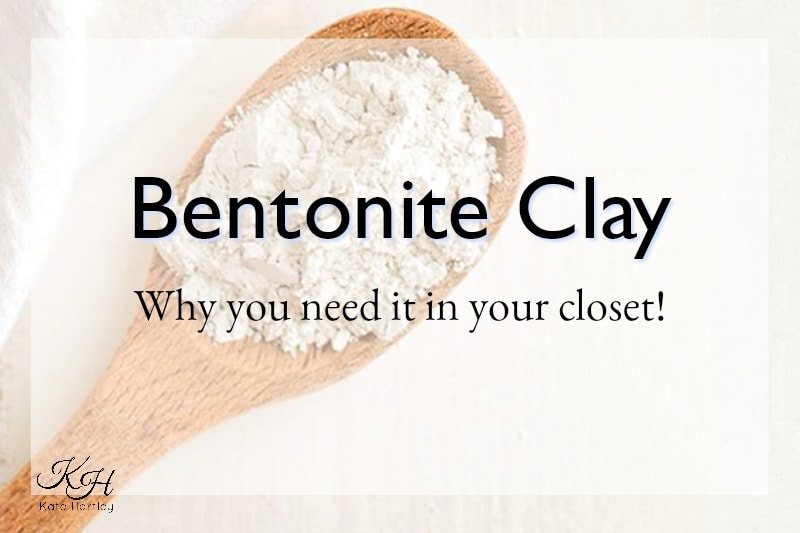The Healthy Benefits You Need To Know About Bentonite Clay
Bentonite Clay: why every health guru needs it in their closet!
I recently mentioned me using Bentonite clay in helping get through a tummy upset. In fact, it’s something I use regularly to maintain healthy gut health – and as around 80% of our immune system is found in our gut, it’s important to try and keep our digestive system as pucker as possible.
What is Bentonite clay?
It’s made from volcanic ash. It’s 100% natural. The majority of Bentonite clay is sourced from Fort Benton in Wyoming, hence its name. Another name for it is Montmorillonite clay which is where the clay was first discovered. It’s been used throughout history by ancient cultures as a healing clay to detox and mend the body.
How do we use it?
We can either slaver it on our skin – the body’s largest organ, or we can drink it! Bentonite clay contains a whole heap of negative ions which attract the baddy positive ions. Another excellent way to negate positive ions is to go barefoot outdoors ….
Getting heavy metal
The negative ions attract heavy metals that we may have ingested through our water supply, medications, food or even air, because many metals contain positive electrical charges. This means the baddy positive ions get attracted to the healthy negative ions, bind to the clay and get pooped out or washed off.
Bentonite clay has also been found to remove some of the dangerous fluoride that’s added to our drinking water supplies. Flouride has been linked to serious diseases such as diabetes, thyroid dysfunction and brain damage. I think I’d rather have gappy teeth!
Benefits of using Betonite Clay
Bentonite clay helps to fight off pathogens such as Salmonella, E. coli, MRSA and the virus that causes staph infection. Arizona State Uni also found that it might also be able to help kill off bacteria that have become anti-biotic resistant!
For one of the reasons I’m currently using Bentonite clay, it works as a healthy antacid and can soothe an irritated stomach lining, helping to prevent cramps and nausea.
Mammals can also benefit from a small amount added to their daily water (so long as it’s added to a plastic or glass bowl and not a metal bowl – see warnings at the end of this article). It has been proven effective at absorbing rotaviruses and coronaviruses which are the leading cause of gastro-intestinal problems in animals. Maybe that’s why dogs love drinking out of muddy puddles?
Bentonite clay contains a range of nutrients which are beneficial for our health, including calcium, magnesium, copper, silica, sodium, potassium and iron.
On our skin, Bentonite clay helps to soothe psoriasis, dermatitis and eczema. It draws out toxins and is a healthy exfoliator (and doesn’t clog up the oceans with those tiny exfoliating beads!)
How can we use it?
Clay face mask:
Mix up some clay with a little water (1:1) approximately. Next, let it rest for 15 – 20 minutes until the clay has absorbed the fluid, then use as a clay face mask or spot treatment. Leave the mask on for 15 – 20 minutes or until it has begun to dry, then rinse off. Your skin will feel sublimely soft afterwards.
Bentonite clay bath:
Add half a cup of Bentonite clay to a bowl of warm water and let the water absorb the clay to form a runny paste. Fill your bath up with warm water, add the clay mixture, swirling as you go and give yourself a full body detox. Ignore the odd blob of clay which may get stuck to your skin. You can break them down once you’re in the bath.
Bentonite clay detox:
Add a heaped teaspoon of Bentonite clay to your drinking water every day. I have mine as the drink which follows my pint of water with freshly squeezed lemon juice in the morning. You’ll need to let the clay sit in the glass of water for around 20 minutes for it to become absorbed, give it a stir and get it into your life pod while your intestinal villi go wild with delight!
If you’re new to detoxing, go easy to begin with and start with half a teaspoon to reduce the chances of a detox headache and fatigue.
Mouthwash:
Bentonite clay binds to harmful bacteria in the mouth. It’s used in natural toothpastes for this purpose. I swish my first mouthful of Betonite clay water for a few seconds before spitting it out, then drink the remainder of it.
Tips for mixing clay
Tip #1: Use only plastic or glass – no METAL as the clay reacts with it. The metal will neutralize the negative charge which is what works the magic.
Tip #2: Add clay to your water, not the other way around!
Tip #3: Be patient. It can take up to 20 minutes for the clay to be absorbed into the water. I sometimes add my clay to the water before bedtime, then give it a swirl with a plastic spoon in the morning before drinking it.
Tip #4: Stir before drinking.
Warnings
Bentonite clay can contain trace amounts of lead, however, the amounts are tiny and less than what we generally find in vegetables we eat such as greens, spinach, sweet potatoes etc. Make sure to source from a reputable supplier. I buy mine from Grape Tree in the UK which also has an online ordering facility. If they are out of stock or I want it quickly I buy Montmorillonite Detox Bentonite Clay from Amazon. It doesn’t say Bentonite Clay on the packet, but if you look at the product details and the customer questions, you can see it is a high-grade Bentonite clay.
If you end up with a clay mess, scoop it up in a tissue and put in the bin. Don’t throw it down the sink or you may end up with a blockage!
How to choose a safe clay
- Clay should be smooth, not gritty
- It should be pale grey in colour
- Bentonite clay should have no odour
- It should be sold in a sealed, closed bag. Some sources sell it in a ziplock bag – aka dodgy!
- The pH. value of the clay should be alkaline, at least 8.7.
- Is the company where you source your clay easy to contact?
Hell bent on Bentonite clay
From my personal experience of using Bentonite clay both on my skin and inside my life pod, I give it a huge thumbs up. It’s helped me speedily get over my tummy upset and I feel happy knowing that I’m helping myself with an all-natural product, not one which is labelled as “healthy” but comes with all sorts of possible side-effects.
I like the fact that it’s been used across the ages. Give me a herbalist or a holistic health specialist any day over a standard Doc. No disrespect to the medical community, but their GP training only includes a few days study of the skin during their 5 years of general medicine practice and the study of nutrition is virtually, if not totally, non-existent. It’s not our GP’s fault, rather the fact they don’t get trained in this stuff.
My daughter had a skin condition on her hand for months – she was misdiagnosed time and time again by our standard GPs and GPs with areas of skin “specialism”. She received strong steroid creams among other treatments, all which have or can have serious side-effects. Finally, we saw a specialist dermatologist who identified the problem within 2 minutes, prescribed her a 2 week course of treatment and voila! Her skin finally cleared up. He told us that in medical school, they only spend around 5 days studying the skin – our largest organ!
If a natural remedy is out there, that’s what I’ll generally choose. To be fair, my daughter’s hand probably wouldn’t have cleared with a natural remedy, but on the whole it’s the path I’ll choose if there is that option. What’s your scoop on natural versus medicinal treatments?













